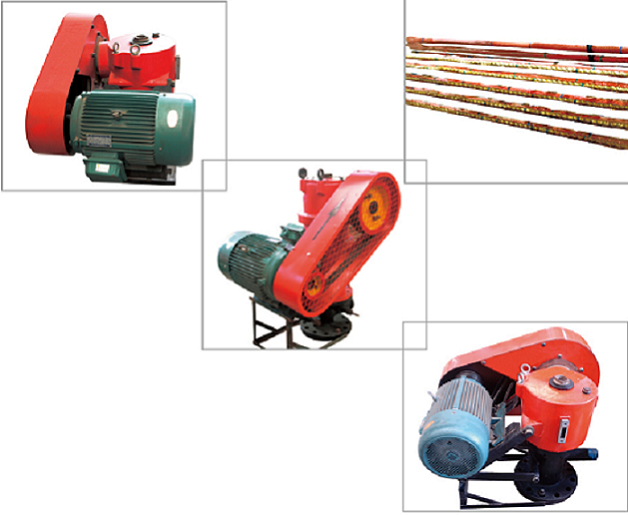Analysis and Finding Method of Grounding Fault of DC System The DC system is an important part of the power plant and is responsible for the power supply of control loops, signal circuits, relay protection, automatic devices, and DC lube pumps, sealed oil pumps, and lighting equipment under accident conditions. The DC system is as important as the control nerve in the human body and plays a key role in ensuring the safe operation and reliable removal of the power supply equipment.
Parts For Pumps are essential equipment for oil suction. We supply surface drive devices, multi function pumps, drive devices, Sucker Rods, polish rods, oil pumping devices, oil pumping equipments, Oil Pipe, drilling spool adaptors, stabilizers for oil pumping pipes and components for PC pumps.
Parts For Pumps Parts For Pumps,Rotor Machining,Stator Plastic Injection,Motor Stator Weifang Shengde Petroleum Machinery Manufacturing Co., Ltd. , http://www.sdpetromachine.com
When a point in the DC system is grounded, because there is no short-circuit current, the fuse will not be blown and can continue to operate, but must be processed in time; otherwise, when another point of grounding occurs, it may constitute a short-circuit to ground, resulting in relay protection, signal , The automatic device mis-operates or refuses to move, or causes the DC fuse to blow, causing the protection and automatic device and control circuit to lose power. Two poles at the same pole are grounded, and some relays may be short-circuited, and the relays may not be operated and tripped or tripped at levels, which may damage the equipment and expand the scope of the accident, seriously threatening the safe operation of the system. DC positive grounding may cause protection misoperation. DC negative grounding may cause protection against movement.
1, the phenomenon of failure
On August 17, 2012, a 110V DC system insulation monitor of a power plant (2*640MW unit) was grounded to indicate that the resistance of the negative pole to ground was 0Ω, and the grounding branch could not be determined. The field uses a multimeter to measure the voltage of the negative electrode to the ground of 0.2V, and the voltage of the positive electrode to the ground is 116.8V. It is judged that the ground is the negative electrode and is directly grounded. At this time, during the overhaul of one unit, only one unit of the whole plant was operating, and the risk of deficiencies was large. If two points are grounded at the same time in the DC system, it is likely to cause relay protection devices, automatic devices, etc. to malfunction or refuse to move, and the fuse blowing and other faults will bring greater risks and hidden dangers. After research and decision, the power plant immediately formed a grounding search team to carry out grounding point search.
2. Analysis of Possible Causes of Faults The ground fault finding team discusses faults and identifies the possible causes of the faults:
1) Infrastructure failures. During infrastructure construction, due to the hidden troubles caused by construction and installation problems, due to the characteristics of the DC system, the hidden troubles are not easy to control and check at the initial stage of production. The longer the commissioning time, the greater the probability of system grounding failure.
2) Damage to external forces. In the course of operation, the direct current loop is inevitably subject to damage caused by external forces such as crushing, moving, and improper flushing during inspection work. Due to the fact that #1 unit is undergoing maintenance work and the amount of work to put the cable is large when the fault occurs, therefore, this cause is the main search target.
3) Cable quality reasons. Due to the uneven quality of DC cable equipment supplied by the market, DC cables with poor quality have become potential faults of DC grounding.
4) Natural causes. The power plant DC system has many devices and circuits that are complex. In the long-term operation, DC ground faults may occur due to environmental and climate changes, aging of cables and connectors, and problems with the equipment itself. Because the weather is fine when the grounding occurs and the air humidity is moderate, the DC grounding caused by the weather may be eliminated. However, due to the harsh environment of the thermal load control of the DC system, this reason is also the main search target.
5) There are three reasons why the insulation tester does not report the branch circuit: the bus section of the DC system is grounded; the two sections of the DC system are grounded at the same time; the internal load of the thermal power cabinet is grounded.
3. Common fault finding methods Common fault finding methods include:
1) Determine whether the positive or negative electrode is grounded by measuring the positive and negative voltages to ground.
2) Differentiate the two busbars so that the searched grounding range will not be enlarged.
3) Exit the DC insulation tester which has a false alarm during operation.
4) Stop the construction or maintenance test of the secondary circuit immediately and pull the power supply off to see if the signal is eliminated.
5) Determine the DC grounding point by using the segmented location pull method. When using this method, the operating power supply must be powered by the battery, first stop the insignificant circuit, such as the signal circuit and the lighting circuit. Since once the DC grounding circuit is disconnected from the DC system, the positive and negative pole voltages of the DC system bus will appear balanced. Therefore, the DC grounding loop is usually used to determine the DC grounding point in a momentary power failure. This is the so-called “pulling pathâ€. law". However, since the DC system is an uninterruptible power supply, people cannot arbitrarily power off the system. The "pulling method" often causes accidents such as control of the DC system or tripping of the protection circuit. 